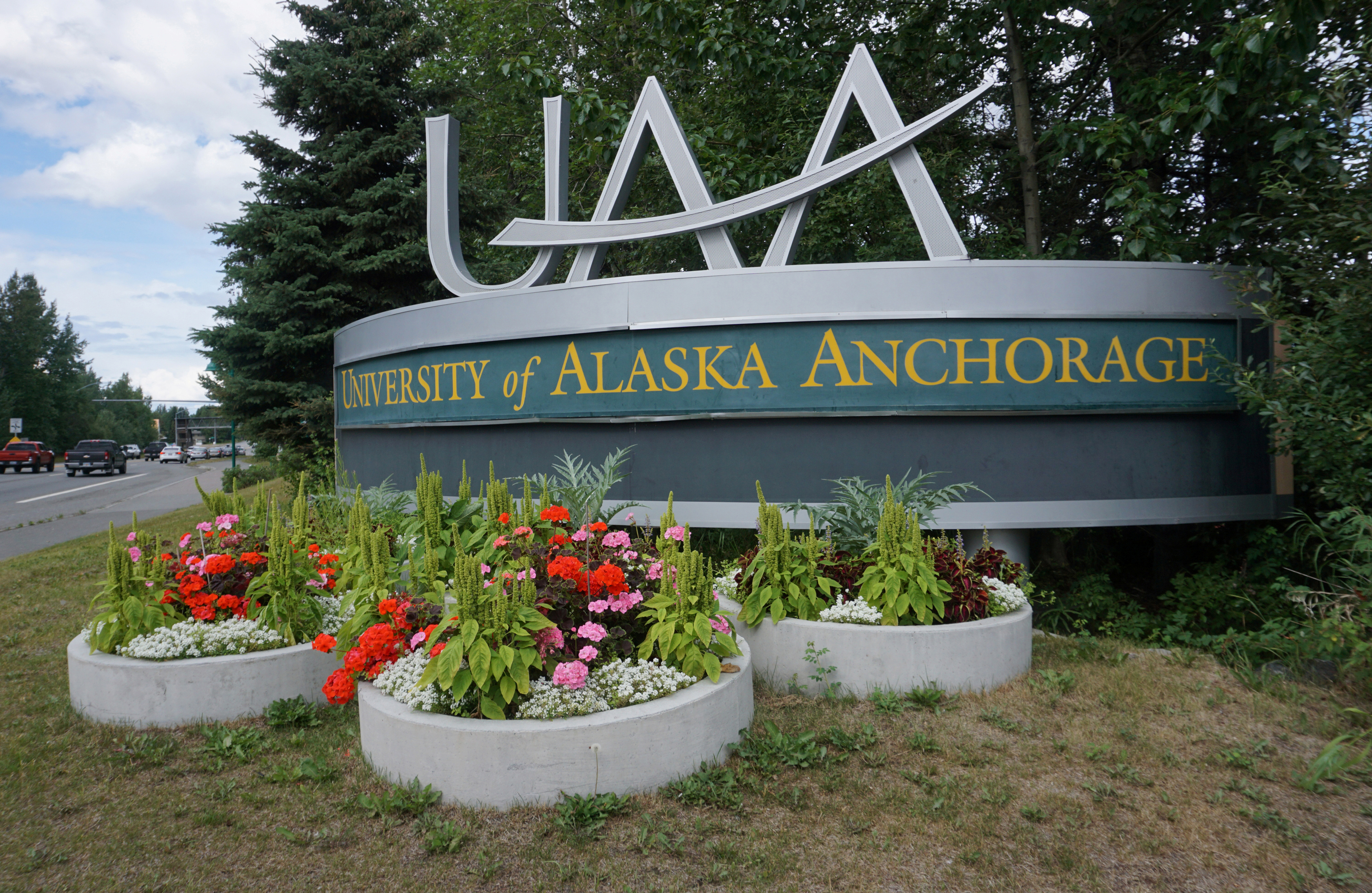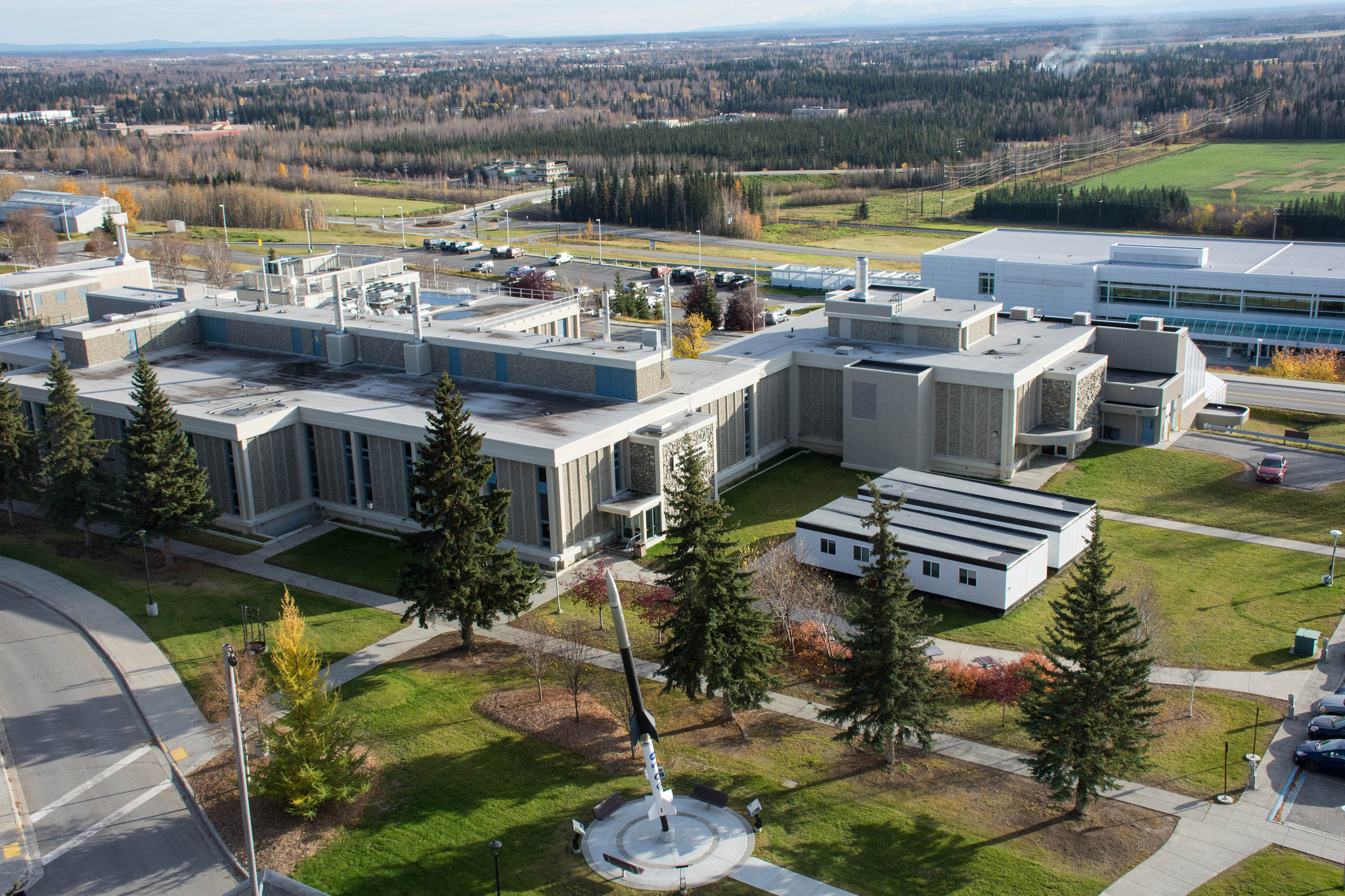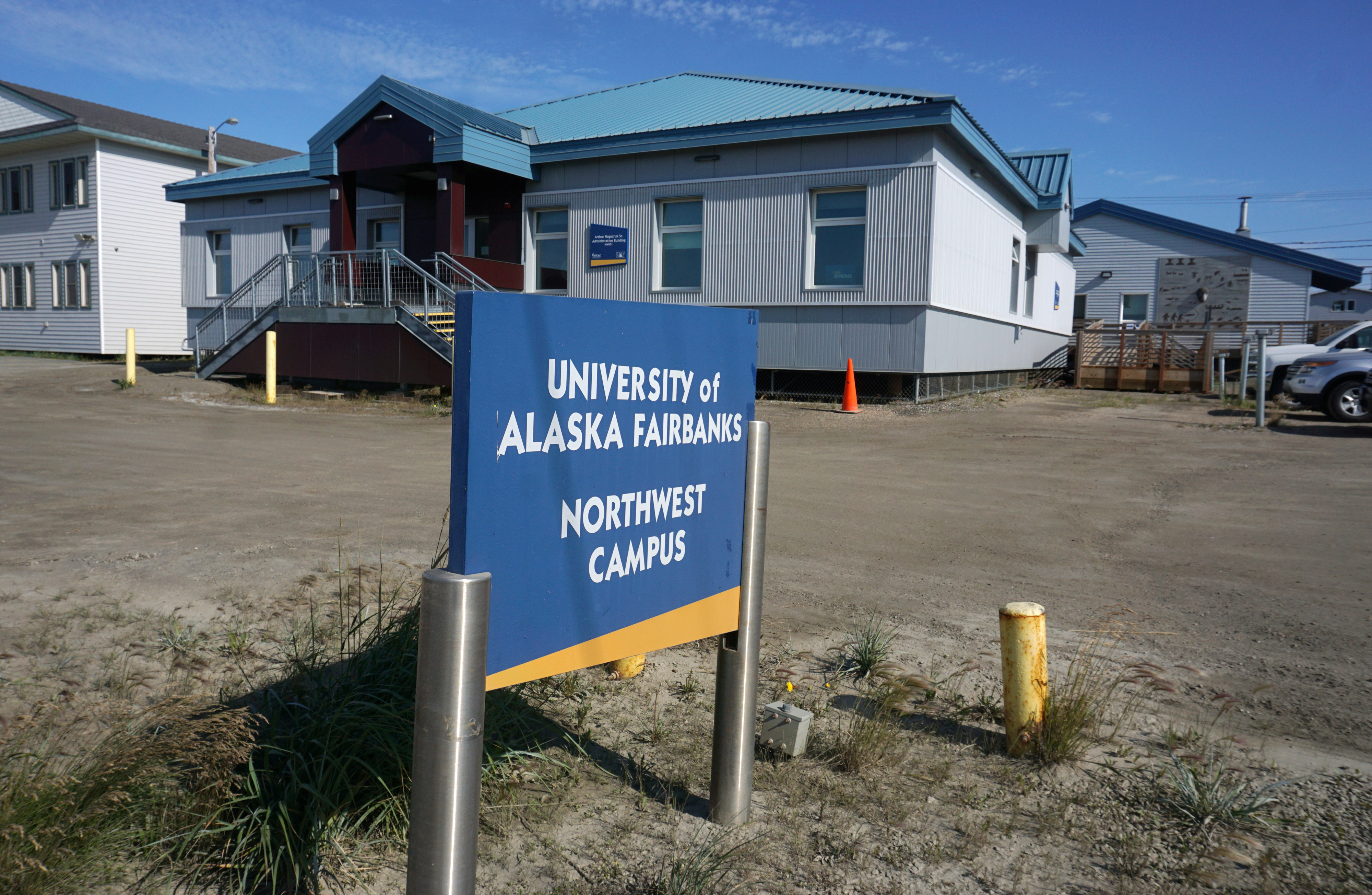Alaska governor tempers university cuts, but Arctic programs are still vulnerable
Gov. Mike Dunleavy backed away from the steepest of cuts. But many Arctic-related programs still saw their funding zeroed out, while others remain in limbo.

Less than two months after Gov. Mike Dunleavy announced drastic budget vetoes that would cut 41 percent of state funding for the University of Alaska system, he reversed course somewhat, pledging to reduce those cuts by nearly half and deferring some of them to future years.
Dunleavy and John Davies, chairman of the University of Alaska board of regents, on Aug. 13 signed a non-binding “compact” that spreads $70 million in budget cuts over three years.
The deal would keep the university system’s Fiscal Year 2020 budget at the same level as what was approved by the state legislature in July. In a special session, the legislature passed new budget bills, including an operating budget that allowed for a $25 million reduction in university funding for the coming year, compared to just-completed fiscal 2019.
At a news conference where he and University of Alaska Regents Chair John Davies signed the three-year document, Dunleavy called the university a “vital institution in the state of Alaska” that has its best days ahead of it.
The governor, who is facing a recall campaign that seeks to oust him from office, said the deep cuts he made using his line-item veto powers prompted the compromise.
“My intention was never to cause angst. My intention was to close this budget gap as much as possible and to start a discussion as to what is important to Alaska and what is not,” he said at the event.
“It’s not my desire to create angst or worry or turmoil. But the budget vetoes, in many respects, got us to where we are today,” he said.

The university system will strive to maintain its Arctic and northern-latitude programs and also to continue to be accessible to Alaska residents, Jim Johnsen, the university’s president, said at the governor’s event.
“We lead the nation and indeed the world in Arctic research. We are very affordable. We have three strong universities and 13 campuses across the state of Alaska,” he said. “We’re here to solve real practical problems that we in Alaska and others living in the North face.”
However, the prospect of a 41 percent cut in state funding, even though that has been tempered, has already damaged the university, making it harder to attract and retain faculty and students, Johnsen said.
The university’s Arctic programs include advanced science tracking the physical effects of the rapidly warming northern climate, programs conducted by programs such as the University of Alaska Fairbanks’ Geophysical Institute, Institute of Arctic Biology and the Alaska Center for Climate Assessment and Policy.
The university also has Arctic programs that focus on business and structural development, such as the Arctic engineering program at the University of Alaska Anchorage; on health, which is studied at the Institute for Circumpolar Health, also at UAA; on far-north energy and mining operations, a focus of study at UAF; and on various northern cultural subjects such as Indigenous languages and arts.
UA administrators will continue to consider a plan to consolidate the three accredited universities — in Fairbanks, Anchorage and Juneau — into one, Johnsen said. That plan, authorized by the regents after they issued a declaration of financial exigency in July, will be presented in fuller form in September, he said.
Whether to pursue that plan will be up to the regents, he said.
Even the declaration of financial exigency — a status that allows for swift cost-cutting, including dismissal of tenured faculty — might be withdrawn, Davies said told reporters.
The $25 million budget cut in the coming year will be noticeable, said Larry Hinzman, vice chancellor for research at UAF.
“It’s still a substantial cut. One of my colleagues said, `Half a nuclear bomb is still a nuclear bomb,’” he said.
However, the reduction to $70 million and the decision to spread reduction over three years represent an “incredible reprieve” compared to what was looming over the university, Hinzman said.
There is also an existing buffer for research of about $100 million in federal grants already secured by the university, he said.

Some legislators were less positive about the compact. While relieved that the cuts will not be as deep in the first year, they criticized the efforts to demand cuts in future years — and pointed out that it has no force in law.
The signed compact notwithstanding, the legislature retains the authority to set the year-to-year budgets for the university system and the university regents retain authority to decide how the budgets are allocated, according to the Alaska constitution. There is no legal way for the governor to determine future years’ budgets beyond year-to-year line-item vetoes.
State Sen. Scott Kawasaki, in a Twitter message, called the deal “extortion.”
“Governor Dunleavy simply doesn’t get it. We operate in a democracy where there are specific roles of each branch of government,” Kawasaki, who represents Fairbanks, said in a statement. “The legislature is the appropriating branch, and Governor Dunleavy cannot constitutionally make appropriation deals that bind future legislatures. It circumvents Alaska’s respected constitution and the public process.”
The leader of the state House had a similar response.
“I thank the thousands of Alaskans who stood strong behind the Legislature as it pushed back against the governor’s damaging budget. Your voices made the difference,” House Speaker Bryce Edgmon, from the Bristol Bay town of Dillingham, said in another statement. “While I am supremely grateful that the University of Alaska will not face such drastic cuts today, these vetoes never should have happened in the first place. I remain concerned about the potential impacts of future reductions, and I firmly stand by the legislature’s role as the appropriating body.”
Dunleavy did block one of the university’s Arctic-focused projects.
When he signed the Fiscal 2020 capital budget passed by the legislature in its special session, Dunleavy vetoed a $2.5 million state contribution to purchase of seismic monitoring stations that were set up across northern and western Alaska.
The stations were installed in a national project, USArray, that was funded by the National Science Foundation, U.S. Geological Survey and numerous other institutions. Under a tentative agreement, the Alaska Earthquake Center at UAF would buy dozens of the stations, with various federal agencies contributing more than $40 million for the acquisitions. Now, with no state money for the transaction, the deal is in limbo, said Alaska State Seismologist Mike West.
The university is already in the process of taking over 43 monitoring stations across southern Alaska, with the majority of the funding being provided by the USGS, West said. But having a more permanent network north of the Alaska Range mountains and in western Alaska is considered critical, he said.
The southern stations incrementally improve seismic monitoring in Alaska’s most populous regions, but the northern stations were some of the first seismic monitors there, he said.
“I’ve always thought the big-ticket prize in this effort is the north and west,” he said. “We have areas up north the size of Montana with nothing in it.”
Arctic Alaska is seismically active: On Aug. 12, 2018, a magnitude-6.4 earthquake, the most powerful earthquake ever recorded on the North Slope, struck an area near the Inupiat village of Kaktovik. Though there are not as many people as in southern Alaska, there are potentially vulnerable communities in northern and western Alaska, and there is considerable infrastructure that could be affected by earthquakes, most notably the North Slope oil fields, West said.
Additionally, many of the Alaska stations have been fitted with meteorological and soil-monitoring devices to help keep track of weather and climate change. All of the northern and western stations that the Alaska Earthquake Center hoped to acquire are fitted with the full complement of equipment to track weather, soil temperatures and sounds, West said.
In his veto summary, Dunleavy said the project request can be considered in the next capital budget. “If this is a priority project it should be submitted for consideration during FY21 development,” his veto message said.
But West said there is a much more immediate time crunch.
This fall, the system’s operators will start planning decommissioning and removing stations, he said, with those removals expected to occur in 2020. The state has until about October to put up money to show its interest in retaining the 45 stations it would like to keep operating in northern and western Alaska, he said.
Dunleavy’s capital-budget vetoes targeted some other Arctic-related programs.
He zeroed out all state funding — an amount totaling $750,000 — for the nonprofit Cold Climate Housing Research Center. The Fairbanks-based center, which was founded by members of the Alaska building industry and established more than a decade ago on land leased from UAF, is considered an international leader in high-latitude energy-efficient design.
In a Facebook post, the center gave thanks to legislators “who made every attempt to continue supporting our important work for Alaska homeowners, builders, and communities.”
“We made clear to them the return on investment the state has received from our efforts through the years. However, that message was not heard by the governor,” the post said. It asked for suggestions for other funding courses to support the center’s core functions. “Everyone here at CCHRC knows the importance of what we do, and we’ll continue to find a way,” it said.
Other Arctic-related items that Dunleavy cut from the capital budget included $300,000 for water-tank improvements at a school in the Yukon Flats School District in eastern interior Alaska, $200,000 to support the federal Denali Commission’s rural Alaska water and sanitation improvements and $400,000 to support the Marine Exchange of Alaska’s vessel tracking system. The tracking system is considered important to boosting marine safety in the Bering Sea and Bering Strait region, where traffic is increasing as sea ice diminishes.
For each of those vetoed items, Dunleavy’s explanation was identical: “The state’s fiscal reality dictates a reduction in expenditures across all agencies.”